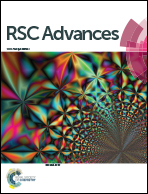Plasma-assisted and thermal atomic layer deposition of electrochemically active Li2CO3†
Abstract
Thin-film lithium carbonate (Li2CO3) has applications in various electrochemical devices, like Li-ion batteries, gas sensors and fuel cells. ALD of Li2CO3 is of interest for these applications as it allows for uniform and conformal coating of high-aspect ratio structures and particles with very precise thickness control. However, there are few studies that focus on its fabrication and characterization. In this work, plasma-assisted and thermal ALD were adopted to grow ultra-thin, conformal Li2CO3 films between 50 and 300 °C using lithium tert-butoxide as a precursor and O2 plasma or H2O/CO2 as co-reactants. More specifically, we focus on the plasma-assisted process by film growth, stability and conductivity studies and emphasize the differences from its more extensively adopted thermal counterpart. Plasma-assisted ALD allows for higher growth per cycle values (0.82 vs. 0.60 Å), lower substrate temperatures and shorter cycle times. The stoichiometry of the films, ranging from Li2CO3 to Li2O, can be controlled by substrate temperature and O2 plasma exposure time. The ionic conductivity for both plasma-assisted and thermal ALD is measured for the first time and is in the order of 10−10 S cm−1 after normalizing to the different effective surface areas. The Li-ion conductivities found here are in line with literature values predicted by simulation studies.



 Please wait while we load your content...
Please wait while we load your content...